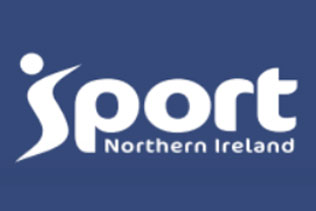
Aerodynamic science reveals new insights that can change Paralympic and World Championship podiums
The importance and prestige of Paracycling is on the rise, but insight in Paracycling aerodynamics is very limited. Therefore, researchers from NUI Galway (Ireland), Eindhoven University of Technology (The Netherlands) and KU Leuven (Belgium) have used advanced technologies such as engineering simulation (Computational Fluid Dynamics (CFD)) developed by ANSYS and wind tunnel facilities typically dedicated to aerospace, nuclear or automotive research to better understand and improve the complex aerodynamics of elite Paracycling tandem and handcycling disciplines. The results show that decisive gains can be achieved by counter-intuitive postures and wheel selection that can change the outcomes in the Paracycling competitions in the games next year.
Wednesday, 3 April, 2019: Dr Eoghan Clifford, NUI Galway, a four-time paracycling world champion and current Paralympic Champion has joined forces with Professor Bert Blocken, Eindhoven University of Technology (TU/e) and KU Leuven, recognised worldwide for his expertise in elite cycling aerodynamics. Surprised by the scarcity of scientific research performed on Paracycling where many fundamental insights are lacking, they decided to set up the first large open scientific research project into Paralympic cycling in collaboration with Drs. Magdalena Hajdukiewicz (NUI Galway), Dr Yasin Toparlar (TU/e), Dr Thomas Andrianne (U Liège) and Dr Paul Mannion (who was jointly awarded a PhD by NUI Galway and TU/e for his work on this project).
The project combined computer simulation (CFD) with ANSYS software on Irish and Dutch supercomputers with wind tunnel testing in the wind tunnels of Eindhoven University of Technology and the University of Liège. The investigation focused on both tandem cycling and H1-H4 handcycling.
This investigation resulted in four key new findings. Applying these findings in races would yield significant gains in terms of time. In recent top races at Rio 2016, the difference between Gold and Silver or missing the podium was often a matter of seconds:
• Tandem cycling: Men – 4 km pursuit (Rio velodrome) – Gold to Silver (1.6 seconds); Bronze to 4th place (0.9 seconds).
• Tandem cycling: Men 30 km time trial (Rio road) – Gold to Silver 8.8 seconds.
• Tandem cycling: Women – Tandem 3 km pursuit (Rio velodrome) – Gold to Silver (3.5 seconds). In qualifying 0.8 seconds separated the 3rd place position from the 5th place position (3rd and 4th quality for a medal ride off).
• Tandem cycling: Women 30 km time trial (Rio road) – Silver to Bronze 0.8 seconds.
• Handcycling: Men 20 km time trial (Rio road) – Gold to Silver in some cases was as low as 2 seconds and 10 seconds with Silver to Bronze being as low as 0.9 seconds in one category.
The research resulted in four key new findings that are generally opposite to what Paracyclists and their entourage would expect and that in race circumstances can make very significant differences in time:
-
The typical time-trial setup with a time-trial handlebar for the pilot and the stoker does not provide the lowest aerodynamic resistance. The stoker holding the seatpost of the tandem bicycle (frame-clench setup) provides a gain of 8.1 s over a 10 km race.
-
The most aerodynamic race setup of the tandem cyclists is not the one where pilot and stoker bodies are closest to the horizontal. The pilot being slightly more upright gives a benefit of 6.5 s over 10 km.
-
The most aerodynamic wheel choice for a H1-H4 handcycle is not disk wheels at the rear, as commonly accepted, but two spoked wheels at the rear, because disk wheels would channel the flow between these wheels and create extra suction (drag) on the cyclist body. Spoked wheels at the rear and a single disk wheel at the front would save 16 s on 10 km.
-
For downhill handcycling, athletes tend to adopt the so-called 6 o’clock position, with the hands in the lowest position and the arms tucked against the body. The 9 o’clock position with hands farthest upstream has a 4.3% lower drag, which gives a gain of 0.8 s over a 500 m descent.
As a 4-time paracycling world champion and current Paralympic champion Dr Eoghan Clifford has corroborated these findings and with the research team and high performance coaches has tested athletes and used the findings to guide these athletes towards better performances.
Dr Eoghan Clifford, College of Engineering and Informatics, NUI Galway, said: “This has been one of the most exciting and challenging projects I have worked on. The extensive experimental and computational modelling work was unprecedented for Paralympic cycling and indeed for most sports. The work will fundamentally impact Paralympic cycling and will cause teams and engineers to rethink their approach to aerodynamics. This work also opens the door for world-class Paralympic athletes to have the same expertise and equipment available to them as other professional athletes. At the world championships and Paralympics where tenths of seconds can decide medals this work can unlock that vital time!”
Professor Bert Blocken, Eindhoven University of Technology & KU Leuven, said: “I am passionate about Sports aerodynamics because it really pushes the boundaries of computer simulation and wind tunnel testing. In most topics on aerodynamics, accuracies of 5-10% are considered sufficient. In sports aerodynamics however, tenths or even hundredths of percentages can be decisive. This first extensive open project in Paralympic cycling reveals new insights to obtain such gains in these competitions.”
Thierry Marchal, Global Industry Director Sports & Healthcare, ANSYS, concluded: “As the engineering simulation leader, ANSYS is keen to assist the sport community improving safety and performance of athletes by adopting a technology traditionally used in the aerospace and automotive industries. Elite sport is an ideal window to illustrate the impact of pervasive simulation across all industries.”
Paralympics Ireland Chief Executive Officer, Miriam Malone, added: “I would like to congratulate the research team on the publication of this fantastic research. The results published will fundamentally change the approach that many paracyclists take to their sports and will ensure that more exciting times lie ahead as performances improve. It is particularly pleasing that Paralympics Ireland board member and Paralympic champion, Dr Eoghan Clifford, is spearheading this research project.”
Neill Delahaye, National Performance Coach, Cycling Ireland, added: “Cycling Ireland has had significant international success in Track Cycling and Road Cycling over recent years. To compete with the world’s top nations, we actively engage with research and innovation. From the outset we recognised this work could have significant benefits for our athletes especially given aerodynamics plays such a key role in cycling.”













